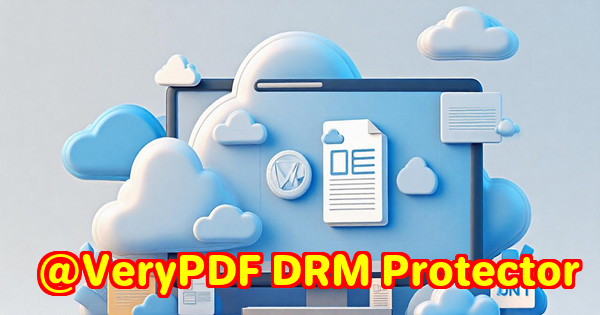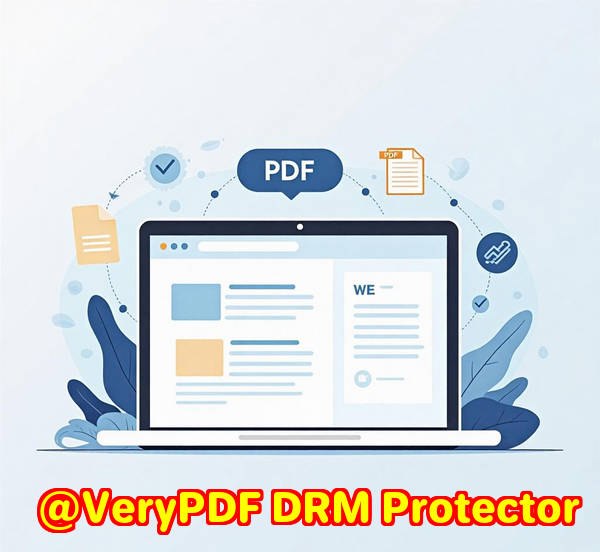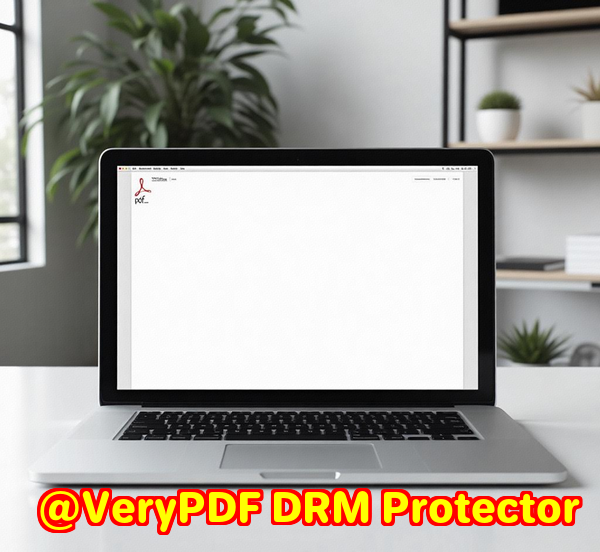Why DWG2Vector is the Go-To Tool for Batch CAD Conversions in Government Agencies
Ever spent hours juggling AutoCAD files, trying to convert them to a readable format for your department? If you’re in government, chances are you’ve faced this headache at some pointbatch converting DWG and DXF files into useful formats for analysis or archiving. The frustration of manual conversion slows down projects, wastes time, and increases the risk of errors. If you’re responsible for managing vast amounts of CAD data, you know how vital it is to find a reliable, automated solution. Enter VeryDOC DWG to Vector Converterthe tool that has been a game-changer for government agencies handling large-scale CAD file conversions.

The Struggles of Manual CAD Conversions
Let’s be honest: handling CAD files can feel like managing an ever-growing mountain of paperwork. When I first started managing DWG and DXF files for a government project, I quickly realized that dealing with AutoCAD formats isn’t as straightforward as it should be. These files don’t always play well with other software systems used for reporting, publishing, and archiving. I needed a solution that could batch convert multiple CAD drawings into scalable vector formatssomething that could support large projects, run on different systems, and integrate smoothly into our existing workflows.
That’s where DWG2Vector comes in. As a simple yet powerful tool, it saves you from hours of repetitive manual conversions and gets the job done quickly. The best part? It doesn’t require AutoCAD to function.
The Power of VeryDOC DWG2Vector Converter
DWG2Vector is a command-line tool that batch converts AutoCAD DWG and DXF files to a range of scalable vector formats like PDF, EMF, WMF, SVG, Postscript, and XPS. The solution is perfect for organizations, especially government agencies, that work with large volumes of AutoCAD files on a daily basis.
Key Features:
-
Batch Processing: You can convert multiple files at onceideal for processing hundreds or even thousands of DWG or DXF files. This is a major time-saver for large-scale projects, reducing the manual effort involved in converting each file.
-
Flexible Output Formats: It supports over 10 output formats, including industry-standard ones like PDF, SVG, WMF, EMF, XPS, and more. This flexibility ensures that you can choose the right format for the task at hand, whether it’s for digital archives, presentation, or sharing with stakeholders.
-
Customizable Settings: The tool gives you the option to customize output settings like DPI, line width, color mode, and more, ensuring the final product meets your exact specifications.
-
Support for Multiple Layouts: For complex CAD files with several layouts, DWG2Vector allows you to handle multiple views, ensuring each layout is converted correctly into its own file.
-
No Need for AutoCAD: One of the biggest benefits is that it works independently of AutoCAD. You don’t need to have the software installed, which makes it more cost-effective and easier to manage across teams and systems.
-
Cross-Platform Compatibility: DWG2Vector runs on both Windows and Linux, making it versatile for organizations that use a mix of operating systems.
A Real-World Application
Government agencies often deal with vast amounts of infrastructure planning documents, city planning blueprints, or public works data, and the need for reliable CAD file conversion is critical. Let me share an example.
A local city planning department was tasked with digitizing decades of architectural blueprints and floor plans. The drawings, stored in DWG format, needed to be converted into vector PDFs for archiving and further editing. The team was facing a backlog of over a thousand files that needed to be processed, and manually converting each one was an obvious bottleneck.
With DWG2Vector, they were able to batch process the entire set of drawings. The output was clean, scalable PDFs that could be integrated into their document management system. This saved them weeks of work and significantly improved workflow efficiency.
How DWG2Vector Beats the Competition
If you’ve worked with other CAD conversion tools, you probably know that many of them fall short when it comes to batch processing, precision, or the number of supported formats. In comparison, DWG2Vector is faster, more reliable, and more flexible.
For instance:
-
Some tools offer limited output formats, which can be a problem if your team requires specific formats like EMF or PCL. DWG2Vector supports a wider range of formats, ensuring you can always output to the exact file type needed.
-
Batch processing is another area where DWG2Vector outshines competitors. While many tools require manual input for each file, DWG2Vector allows you to specify entire folders or use wildcard characters for batch conversions. This drastically reduces time spent on repetitive tasks.
-
The ability to customize settings like DPI, line width, and paper size is a huge advantage over other tools that don’t offer such flexibility.
Core Advantages for Government Agencies
For government departments or organizations that rely on accurate, timely, and scalable CAD file conversions, DWG2Vector is the tool of choice for several reasons:
-
Cost-Effective: Unlike AutoCAD or other specialized CAD software, DWG2Vector doesn’t require any expensive software licenses. It’s a one-time purchase, which is great for tight budgets.
-
Efficiency: Batch processing allows you to process hundreds or thousands of files at once, a huge time saver for large projects or teams.
-
Accuracy: The tool preserves the integrity of the original CAD drawings, ensuring that the converted files are accurate and ready for further use in publishing, archiving, or sharing with other departments.
-
Ease of Use: With a simple command-line interface and no need for AutoCAD, the tool is easy to integrate into existing workflows, even for teams without advanced CAD experience.
-
Versatility: From vector PDFs for high-quality printing to SVGs for web use, DWG2Vector handles it all, making it a versatile tool for various use cases.
Use Cases for DWG2Vector in Government Work
DWG2Vector is a perfect fit for any government agency that deals with large amounts of CAD data. Here are some scenarios where it’s particularly useful:
-
City Planning: Batch converting DWG files of city maps and blueprints into vector-based PDFs for easy archiving and sharing with contractors, architects, and the public.
-
Public Works Projects: Converting CAD drawings of infrastructure designs into formats that can be shared with engineering teams, stakeholders, or for use in project reports.
-
Building Permits and Zoning Applications: Many departments require vector PDFs or EMFs for reviewing building applications and zoning requests. DWG2Vector helps streamline this process by converting the CAD files into these formats in bulk.
-
Government Contracting: Government contractors often work with DWG files from various architectural and engineering projects. DWG2Vector helps them easily convert these files to formats that can be easily included in reports, proposals, and presentations.
-
Historic Preservation: For departments dealing with historic building plans or preservation projects, DWG2Vector offers a way to digitize and convert old CAD drawings to vector PDFs, preserving quality and ensuring long-term accessibility.
My Recommendation: Give It a Try
If you’re dealing with large volumes of DWG or DXF files and need a fast, reliable way to convert them into useful formats, DWG2Vector is the solution. After using it on several government projects, I can confidently say that it’s saved me countless hours in manual work and improved the overall accuracy and quality of our conversions.
I highly recommend DWG2Vector to any government agency or organization handling CAD files in bulk. The ability to automate the conversion process while maintaining the integrity of the original files is invaluable.
Click here to try it out for yourself: VeryDOC DWG to Vector Converter
Custom Development Services by VeryDOC
VeryDOC offers comprehensive custom development services tailored to your unique technical needs. If you require specialized CAD processing solutions or additional functionalities, their team can develop utilities based on various technologies, including Python, C++, .NET, and more.
For government departments needing custom solutions, VeryDOC offers expert services in developing utilities that can convert CAD files, process large datasets, or integrate with existing systems. For more details, visit the VeryDOC support center here.
FAQ
-
What file formats can DWG2Vector convert to?
DWG2Vector supports over 10 different formats, including PDF, SVG, XPS, EMF, WMF, and PS.
-
Does DWG2Vector require AutoCAD to function?
No, DWG2Vector is a standalone product and does not require AutoCAD to run.
-
Can I use DWG2Vector to batch convert multiple DWG files?
Yes, DWG2Vector allows you to batch process multiple DWG or DXF files, saving you time and effort.
-
Is DWG2Vector compatible with both Windows and Linux?
Yes, DWG2Vector works on both Windows and Linux operating systems.
-
Can I adjust the output quality, such as DPI or line width?
Yes, DWG2Vector offers customizable options for DPI, line width,




